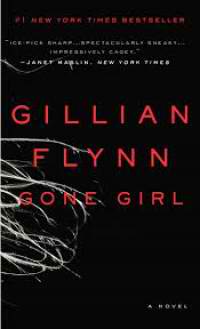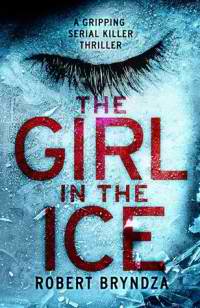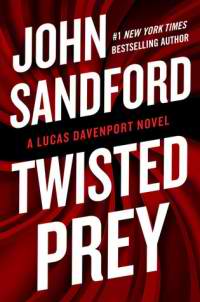The Disappeared by C.J. Box
 Monday, May 7, 2018 at 8:50AM
Monday, May 7, 2018 at 8:50AM 
Published by G.P. Putnam's Sons on March 27, 2018
Much like the current president, the new governor in Joe Pickett’s Wyoming is a wealthy Republican who doesn’t pay his bills and tries to sell himself as one of the common folk. Joe famously conducted investigations for the former governor, so the new governor decides to give him a try. A British CEO named Kate disappeared in Saratoga, Wyoming, and for reasons that have something to do with budget cuts and passive-aggressive bureaucrats, local law enforcement officers are dragging their spurs instead of finding her. The new governor wants Joe to track down the missing woman because the governor cares about getting bad press in British tabloids.
Kate was last seen at an expensive resort where (oh happy coincidence!) Joe’s youngest daughter Sheridan happens to be working. Nate Romanowski shows up to cause the kind of mayhem that soft-talking Joe doesn’t want to cause himself. As usual, Romanowski points his extra-large gun at everyone he meets and has to talk himself out of shooting them, unless he doesn’t. He commits a murder in just about every novel (this one included) while his law-and-order buddy Joe Pickett looks the other way. It is impossible to believe that someone as resolutely virtuous as Joe would befriend, much less enable, the psychopathic Romanowski. The hypocrisy of ticketing the governor for not having a fishing license (we hear about that in every novel) while letting Romanowski get away with all sorts of violent crimes is hard to swallow.
A subplot involves an industrial burner in which unauthorized and mysterious burning is taking place. Another subplot involves Joe’s reaction to Sheridan’s new boyfriend. I’ve learned to shake my head and ignore Joe’s antiquated notions about appropriate human behavior. There’s only one kind of “real man,” the shy but resolute cowboy who says “shucks,” rarely says more than “yup” or “nope,” and shows no hint of being a metrosexual. In other words, real men don’t have a personality. However, real men wear Carhartt coats, a brand name that appears so many times in The Disappeared I’m wondering whether C.J. Box got paid a product placement fee every time he mentioned it. Box even includes a discussion of how to dress like a real cowboy (hint: wear Carhartt). In any event, I’ve always admired Joe Pickett novels for Box’s storytelling skills more than for Joe, who is a stalwart but lackluster character, despite his choice of clothing.
As he did in Cold Wind, Box has his characters sermonize about the evils of wind energy, falsely claiming that it is more expensive than traditional fossil fuel energy while ignoring the benefits of a clean, renewable energy source. His characters are also upset that the wind-generated electricity is transmitted to California, which automatically makes it bad because California is full of metrosexuals. Box acknowledges that wind energy brings jobs to Wyoming, but one of his characters laments that wind energy cost him his job as a coal miner (clearly not true). Box ignores the fact that Wyoming coal is mined to provide power in other states. If it isn’t bad to transport Wyoming’s coal out of Wyoming, what’s wrong with transporting energy from Wyoming’s wind to other states? As anyone who has been to Wyoming knows, the state has wind to spare.
It is a legitimate concern that wind turbines kill birds (which angers Romanowski and his falconer friends), but coal mines kill people and fossil fuels cause global warming that is killing the planet. Life is full of tradeoffs. Wind energy isn’t perfect, but no energy source is. Still, don’t expect to find a balanced discussion of energy or environmental policy in Box’s books.
In addition to his disdain for clean energy, Box reprises another disappointing element of Cold Wind in The Disappeared, one that will apparently play an even stronger role in the next novel. For fear of spoiling what might be a surprise, I won’t mention it, but I will say that Cold Wind is Box’s worst novel, and he does his readers no favors by rehashing its worst plot elements in The Disappeared.
Fortunately, The Disappeared is a slightly better novel, in part because Box avoids the howlingly silly events that makes Cold Wind so utterly unbelievable. The part of the story that involves the missing Kate is interesting and credible, although it lacks suspense. Romanowski isn’t in enough scenes to ruin the book, and I can’t hold it against Box for ascribing ill-informed opinions about wind energy to his characters, given how many people have a distorted view of clean energy (presumably because they are spoon-fed their opinions by Fox News). However, the part of the story that involves mysterious activities at the burner is intended solely to advance Box’s political views by demonizing the people he disagrees with, and I regarded that as a cheap shot.
The novel’s ending is a cliffhanger setup for the next novel. I’m not sure I’ll bother to read it, as the Joe Pickett series seems to have passed its shelf life.
RECOMMENDED WITH RESERVATIONS



